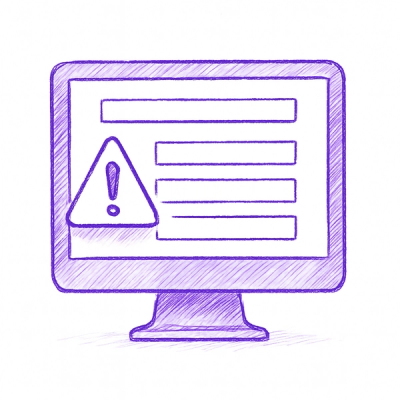
Security News
npm ‘is’ Package Hijacked in Expanding Supply Chain Attack
The ongoing npm phishing campaign escalates as attackers hijack the popular 'is' package, embedding malware in multiple versions.
Tools to build automata from your custom rule.
This package provides a set of handy tools to programmatically build automata, so you can build NFA、DFA、MinimizedDFA、WFA from any custom rules.
conda install -c conda-forge automata-tools # not available yet
# or
pip install automata-tools
See example in examples/NFAfromCustomRule.py
from typing import List
from automata_tools import BuildAutomata, Automata
automata: List[Automata] = []
Build simple (0)-[a]->(1) automata
automata.append(BuildAutomata.characterStruct(char))
Build automata that is an "or" of two sub-automata (1)<-[a]-(0)-[b]->(1)
# to match "a|b"
a = automata.pop()
b = automata.pop()
if operator == "|":
automata.append(BuildAutomata.unionStruct(b, a))
Build automata that is an "and" of two sub-automata (0)-[a]->(1)-[b]->(2)
# to match "ab"
a = automata.pop()
b = automata.pop()
automata.append(BuildAutomata.concatenationStruct(b, a))
Build automata that looks like the "Kleene closure"
# to match "a*"
if operator == "*":
a = automata.pop()
automata.append(BuildAutomata.starStruct(a))
Build automata that looks like the "Kleene closure" but without the loop back (1)<-[ε]-(2), so it only match the token once at most.
# to match "a*"
if operator == "?":
a = automata.pop()
automata.append(BuildAutomata.skipStruct(a))
Build automata that will match the same token for several times (0)-[a]->(1)-[a]->(2)-[a]->(3)
# to match "a{3}"
repeatedAutomata = BuildAutomata.repeatStruct(automata, 3)
Build automata that will match the same token for n to m times
(0)-[a]->(1)-[a]->(4), (0)-[a]->(2)-[a]->(3)-[a]->(4)
# to match "a{2,3}"
repeatedAutomata = BuildAutomata.repeatRangeStruct(automata, 2, 3)
See example in features/steps/customRule.py
from automata_tools import DFAFromNFA, Automata
from your_implementation import NFAFromRegex, executor
nfa: Automata = NFAFromRegex().buildNFA(rule)
minDFA: Automata = DFAFromNFA(nfa).getMinimizedDFA()
minDFA.setExecuter(executor)
print(minDFA.execute(someText))
where executor is a function like the one in examples/NFAfromCustomRule.py:
def executor(tokens, startState, finalStates, transitions):
return True
Set an executor to the automata that can freely use state and transition of the automata, and return a boolean value.
from automata_tools import IAutomataExecutor
defaultExecuter: IAutomataExecutor = lambda tokens, startState, finalStates, transitions: True
minDFA.setExecuter(defaultExecuter)
Set an tokenizer to the automata that can transform string to list of string token, which will be used by the executer.
minDFA.setExecuter(lambda input: input.split(' ')[::-1])
Make automata state transitions not so ambiguous
nfa = NFAFromRegex().buildNFA(rule)
dfa = NFAtoDFA(nfa)
Allow you minify Automata state
nfa = NFAFromRegex().buildNFA(rule)
minDFA = DFAtoMinimizedDFA(NFAtoDFA(nfa))
WFA, it can execute automata use matrix multiplication, so it can be very fast compare to brute force execution, especially when state space is large.
from automata_tools import WFA, get_word_to_index
_, wordToIndex = get_word_to_index([ruleParser(context.rule), tokenizer(text)])
wfa = WFA(minDFA, wordToIndex, dfa_to_tensor)
wfa.execute(text)
Given [['token', 'another'], ['token_in_rule']], return something like
{'token': 0, 'another': 1, ...}
So we can translate automata state to a matrix.
Given an automata, a word index like {'token': 0, 'another': 1, ...}, and a function that transform automata to tensor (see example at customRuleDFAToTensor), return a WFA instance.
Create environment from the text file:
conda env create --file automataTools-env.txt
conda activate automataTools
Save env file: conda list --explicit > automataTools-env.txt
Create a .env file with content PYTHONPATH=automataTools
To pypi
rm -rf ./dist && rm -rf ./build && rm -rf ./automata_tools.egg-info && python3 setup.py sdist bdist_wheel && twine upload dist/*
To Conda
# I'm learning how to do...
Probably the original reference source
FAQs
Tools to build automata from your custom rule
We found that automata-tools demonstrated a healthy version release cadence and project activity because the last version was released less than a year ago. It has 1 open source maintainer collaborating on the project.
Did you know?

Socket for GitHub automatically highlights issues in each pull request and monitors the health of all your open source dependencies. Discover the contents of your packages and block harmful activity before you install or update your dependencies.

Security News
The ongoing npm phishing campaign escalates as attackers hijack the popular 'is' package, embedding malware in multiple versions.

Security News
A critical flaw in the popular npm form-data package could allow HTTP parameter pollution, affecting millions of projects until patched versions are adopted.

Security News
Bun 1.2.19 introduces isolated installs for smoother monorepo workflows, along with performance boosts, new tooling, and key compatibility fixes.